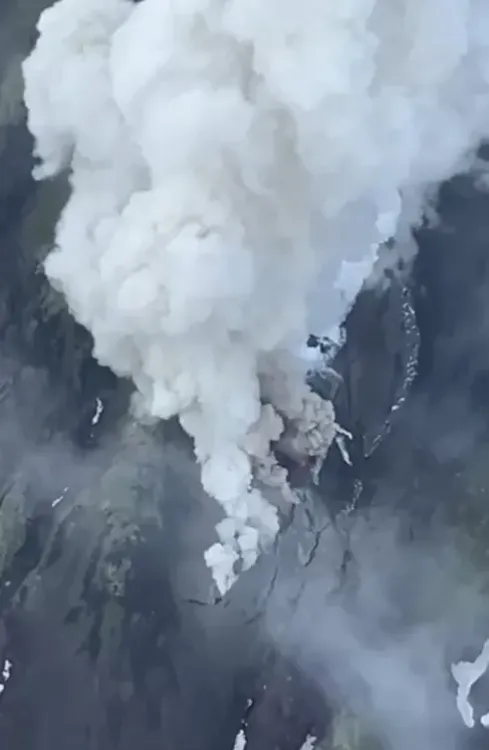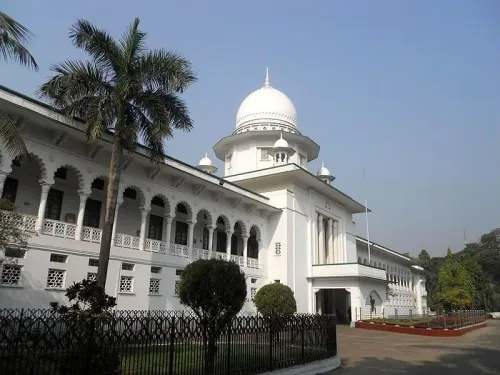Is the Klyuchevskoy Volcano Erupting in Kamchatka?

Synopsis
Key Takeaways
- Klyuchevskoy volcano has emitted an ash plume reaching 7 kilometers.
- No immediate danger to nearby communities has been reported.
- The volcano's aviation color code is orange, indicating potential hazards.
- Recent seismic activity may have triggered the volcano's eruptions.
- Several other volcanoes in the region are also showing signs of activity.
Moscow, Aug 5 (NationPress) The Klyuchevskoy volcano, located in Russia's far eastern Kamchatka Peninsula, has released an ash plume soaring to 7 kilometers above sea level on Tuesday, with the ash cloud moving southeast towards the Pacific Ocean, as reported by local authorities.
"There are no communities in the trajectory of the ash cloud, and no ash fallout has been observed in populated areas. Currently, there are no registered tourist groups near the volcano," stated the Kamchatka branch of the Ministry of Emergency Situations on their Telegram channel.
The volcano has been designated an orange aviation color code, indicating a significant risk of ash emissions and possible threats to aviation.
The eruption activity ramped up on Monday, when the Kamchatka branch of the Geophysical Service of the Russian Academy of Sciences detected four distinct ash plumes from Klyuchevskoy, with the tallest reaching 9 kilometers above sea level, according to reports from Xinhua news agency.
Authorities have cautioned that ash emissions between 6 and 10 kilometers are still possible across several active volcanoes in the area and have advised residents and tourists to steer clear of a 10-kilometer radius around these volcanoes.
Klyuchevskoy stands at 4,754 meters above sea level, making it the tallest active volcano in Eurasia, situated in the Ust-Kamchatsky District. Its current eruptive phase commenced in April.
This volcanic activity follows a powerful 8.8-magnitude earthquake that hit Kamchatka on July 30, marking the strongest tremor in the region since 1952. The earthquake's effects were felt as far away as the northern Kuril Islands, resulting in a tsunami warning and a state of emergency in the Severo-Kurilsk district.
According to Alexey Ozerov, the Director of the Institute of Volcanology and Seismology of the Far Eastern Branch of the Russian Academy of Sciences, "Our data indicates that the last time such extensive volcanic activity was observed in Kamchatka was in 1737, following a magnitude-9 earthquake." Ozerov suggested that the recent seismic event on July 30 may have awakened the region's "sleeping giants."
Yury Demyanchuk, head of the volcanology station in Klyuchi, noted he had never witnessed such widespread volcanic activity in his five decades of work in Kamchatka, as reported by Xinhua news agency.
"At Krasheninnikov Volcano, both summit and central eruptions have begun simultaneously, which could suggest intense internal seismic activity. As for Kambalny Volcano, I last worked on it in 1979. Although it has been dormant for decades, it should not be regarded as extinct," Demyanchuk explained.
He added that the previous eruption of Krasheninnikov likely took place in the 15th century and is known only from layers of volcanic ash. "Of course, no one was monitoring it back in the 1400s, so we can say that today we are witnessing genuinely unique natural phenomena," he asserted.
As of Sunday, six volcanoes are displaying active signs: Avachinsky, Klyuchevskoy, Bezymianny, Kambalny, Karymsky, and most recently, Krasheninnikov, which lies within the Kronotsky Nature Reserve.









